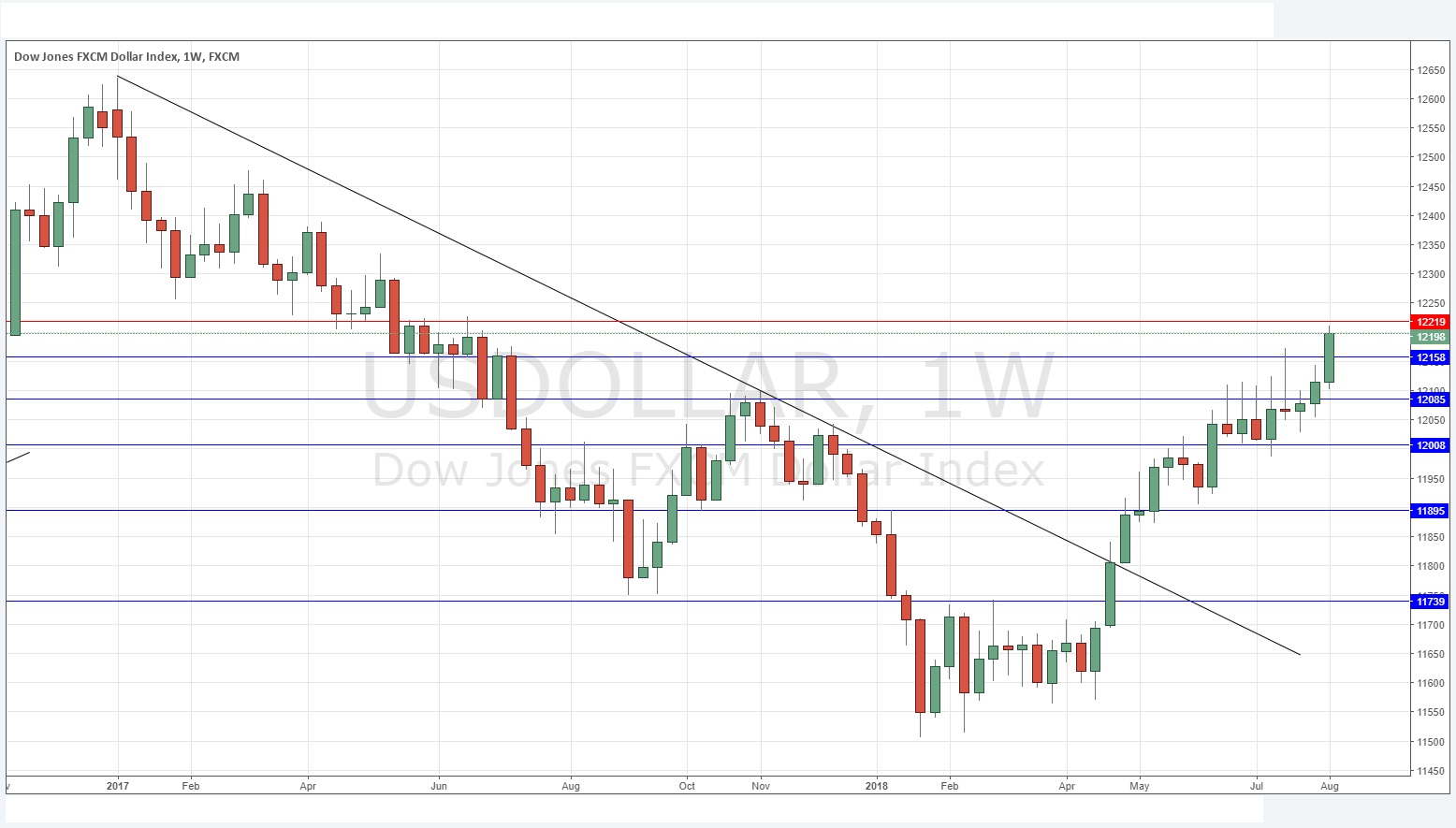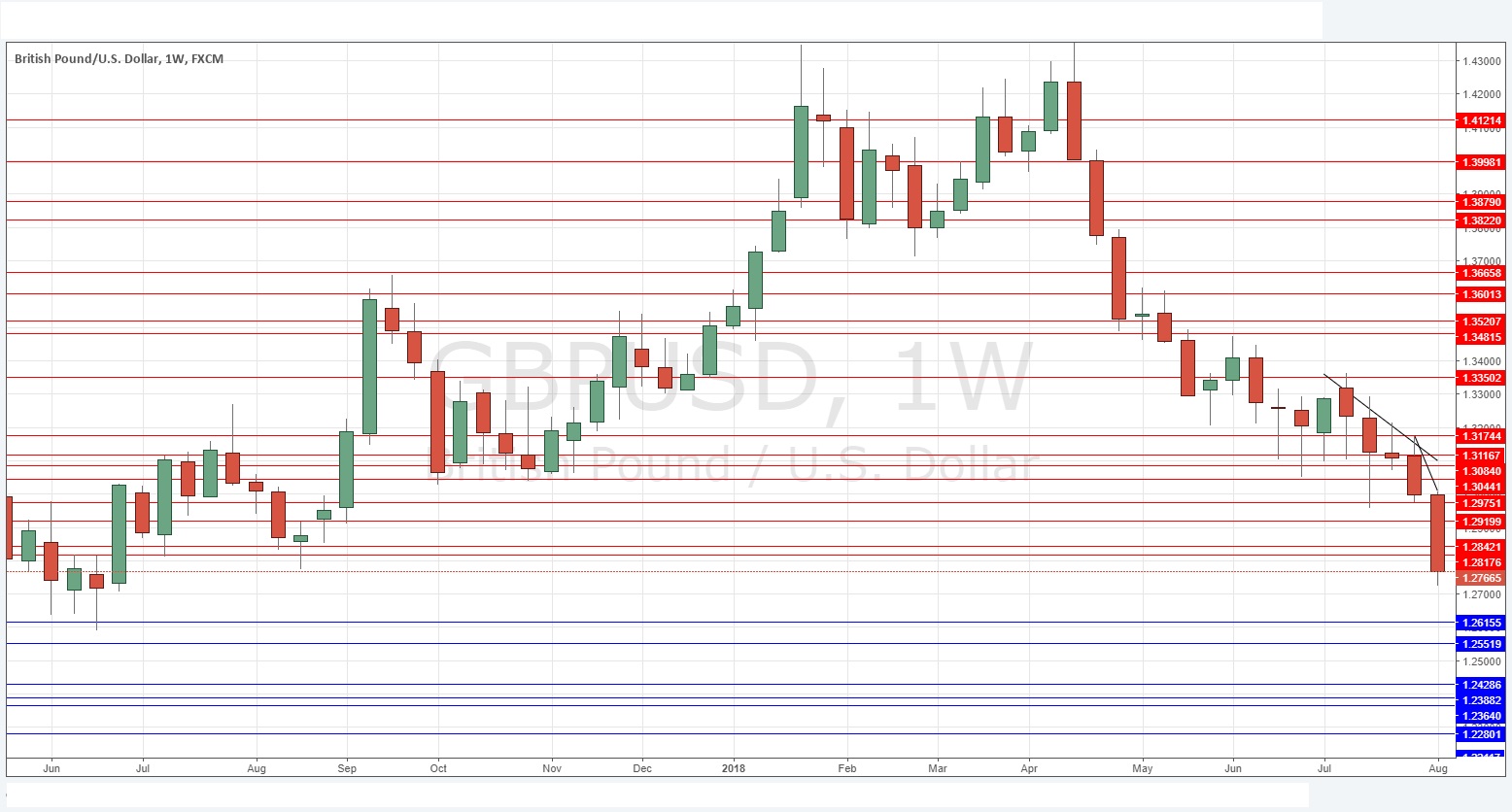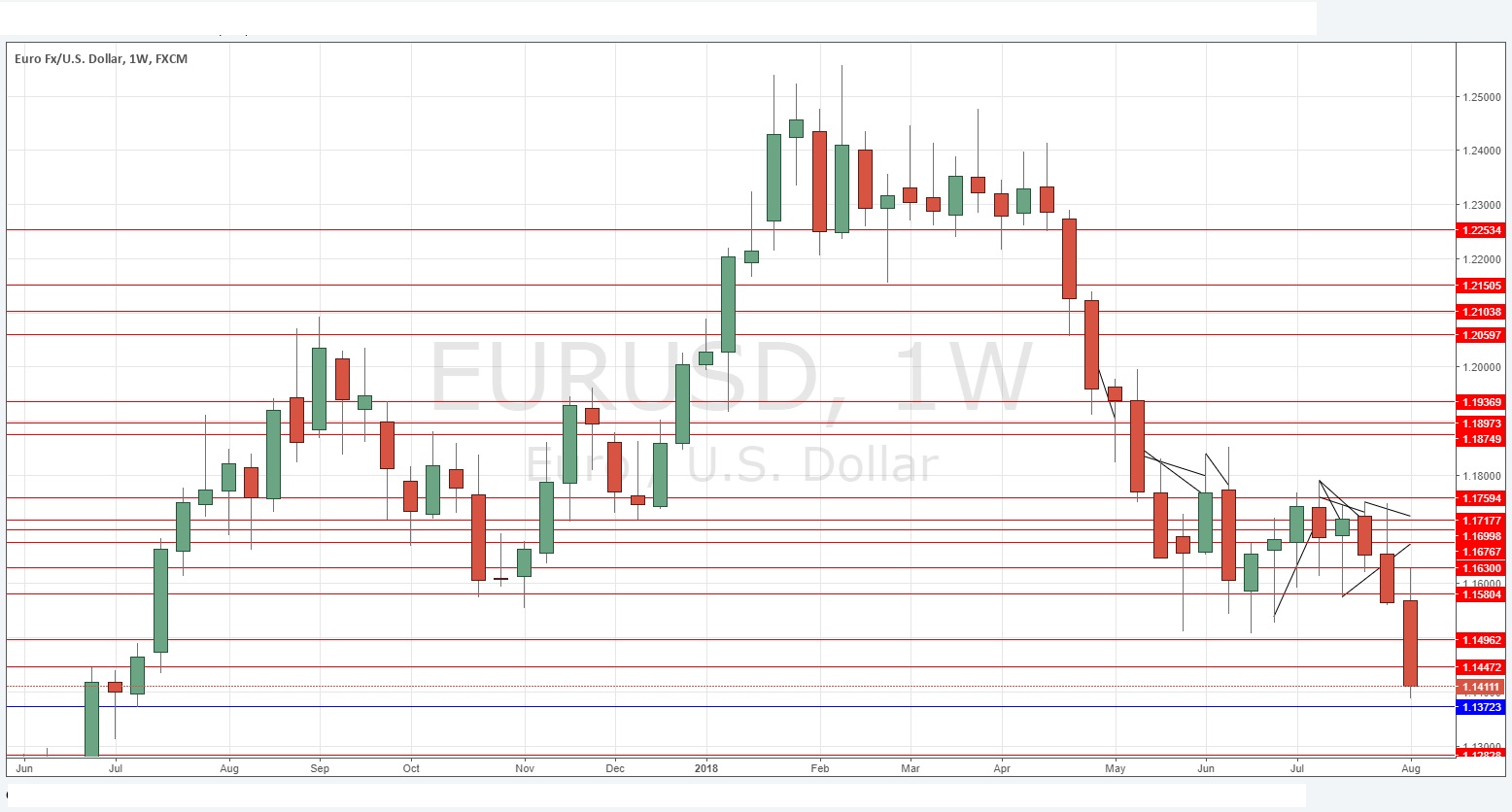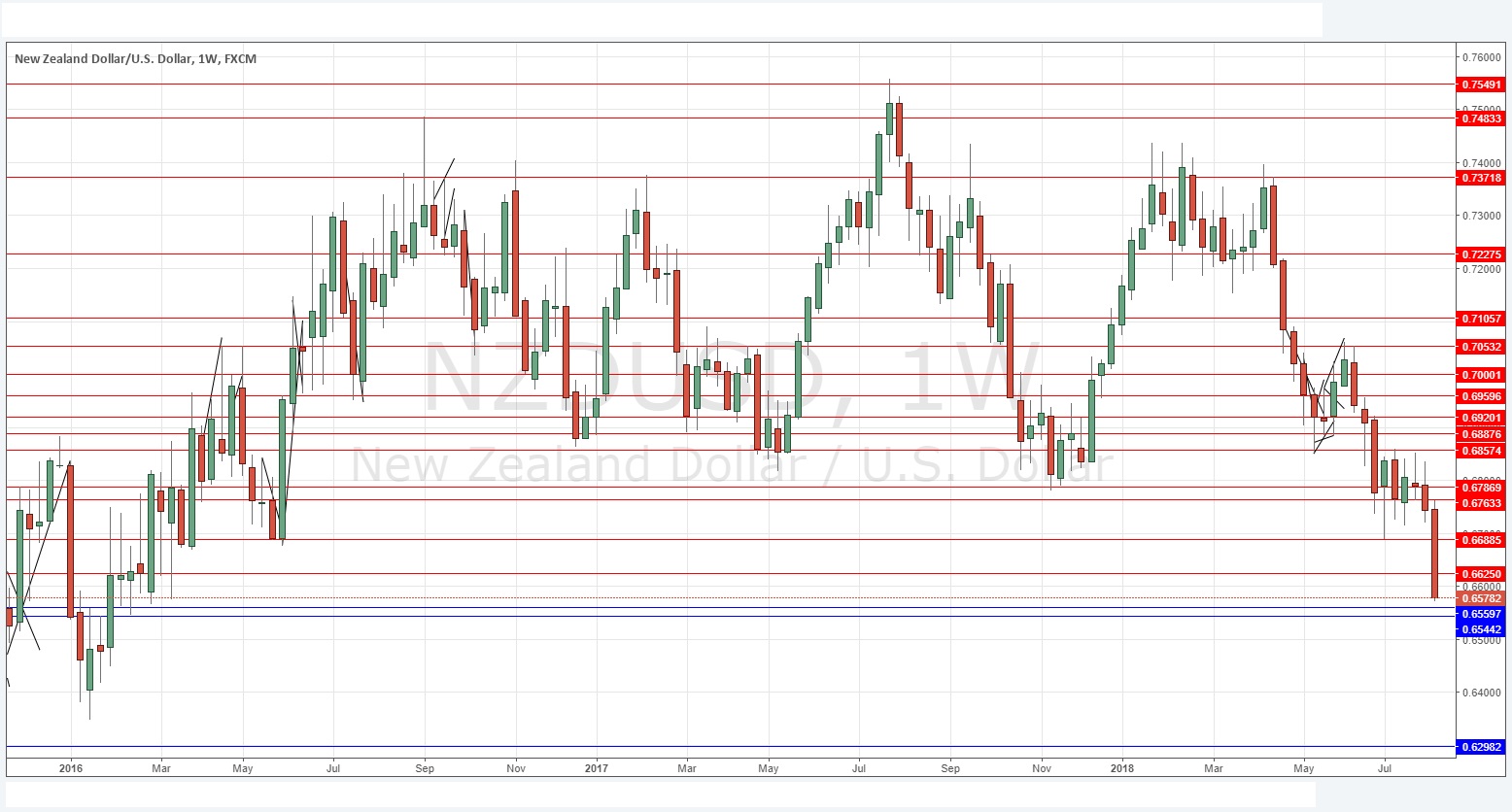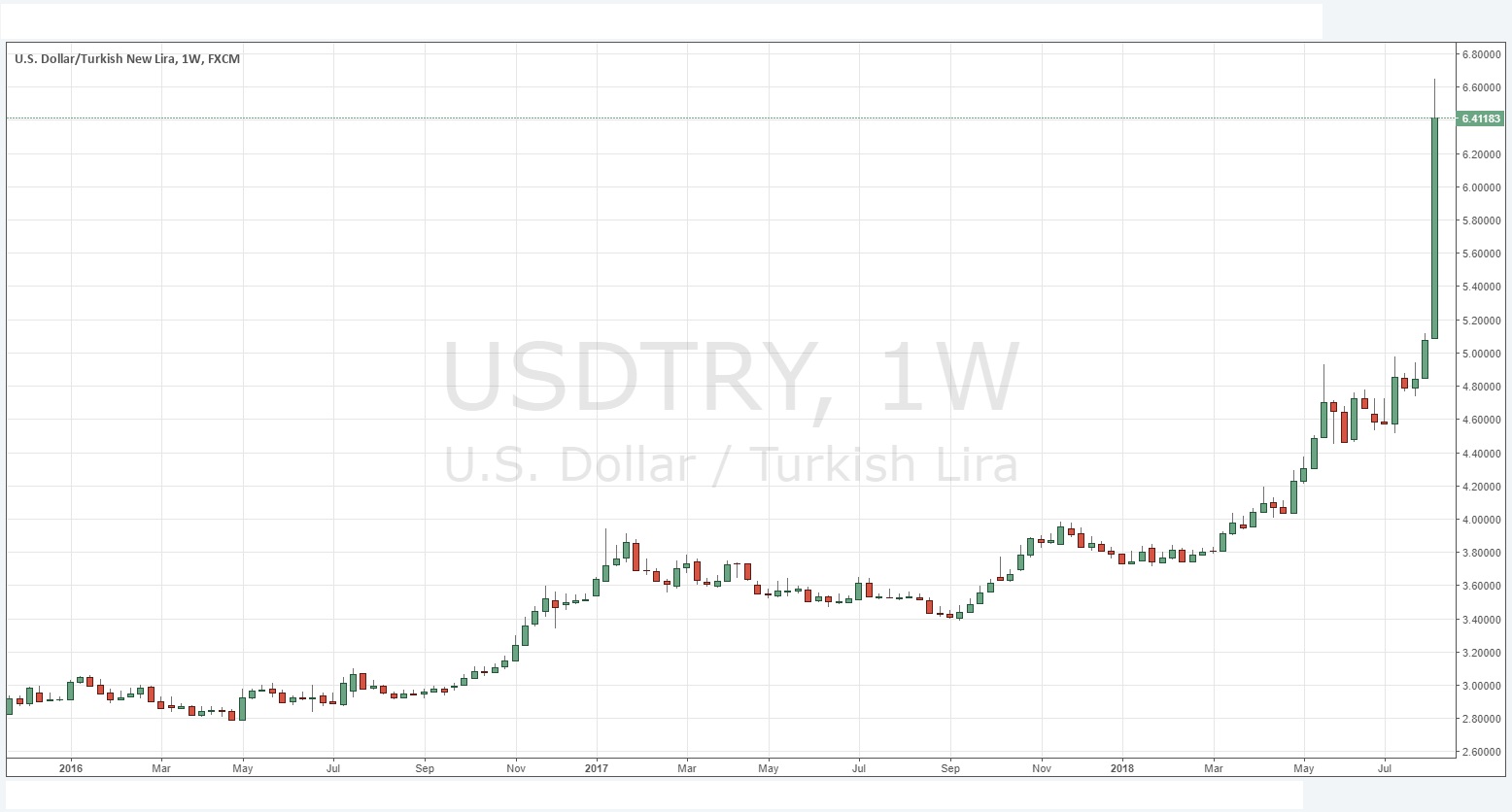The difference between success and failure in Forex trading is very likely to depend upon which currency pairs you choose to trade each week, and not on the exact trading methods you might use to determine trade entries and exits. Each week I am going to analyze fundamentals, sentiment and technical positions in order to determine which currency pairs are most likely to produce the easiest and most profitable trading opportunities over the next week. In some cases it will be trading the trend. In other cases it will be trading support and resistance levels during more ranging markets.
Big Picture 12th August 2018
In my previous piece last week, I forecasted that the best trades would be long of the S&P 500 Index above the previous two weeks’ high price, as well as short EUR/USD and GBP/USD. These trades worked out very well: although the S&P 500 Index ended up down 0.52% from the high price, the EUR/USD fell by 1.34% and the GBP/USD fell by 1.78%, producing an average profit of 0.87%.
Last week saw a rise in the relative value of the Japanese Yen, U.S. Dollar and Swiss Franc, and a fall in the relative value of the New Zealand Dollar, British Pound, Euro and the commodity currencies. It was basically a money flow into “risk-off” assets.
The major development in the Forex market last week is the dangerous collapse in the value of the Turkish Lira, and the sanctions/tariffs dispute between Turkey and the U.S.A., which might even end up taking Turkey out of NATO and lead to the creation of a new anti-U.S. Dollar trade bloc. This could cause a problem for European banks and the Euro itself through contagion / exposure.
The other major item last week was a dovish report from the RBNZ which strongly weakened the New Zealand Dollar.
Fundamental Analysis & Market Sentiment
Fundamental analysis tends to support the U.S. Dollar, as American economic fundamentals continue to look relatively strong. The U.S. Dollar Index ended the week at its highest level seen since May 2017. The Euro and British Pound look weak, as the collapsing Turkish Lira drags the Euro down, and as a “No Deal” Brexit becomes increasingly likely.
The week ahead will probably be dominated by U.S. retail sales data and British inflation data. The coming week is likely to be a little less busy and less volatile than the past week, although if the Turkish crisis worsens, it could be an even more volatile week.
Technical Analysis
U.S. Dollar Index
The weekly price chart below shows that several consecutive weeks of struggling to rise significantly higher, the U.S. Dollar Index has finally made a bullish breakout above 12158, suggesting a further rise after a bullish candlestick which closed very close to its high. The Index is clearly in a long-term bullish trend, although there may be a resistance level nearby blocking a further advance above 12219. This still suggests that the outlook for the U.S. Dollar is bullish.
GBP/USD
This pair is technically in a long-term downwards trend, as is shown clearly by the bearish action over the past 16 weeks or so. Although we saw long lower wicks over recent weeks, suggestive of long-term buying close to 1.3000, we now see the price fall very strongly, closing at a 1-year low with a very bearish candlestick that finished very near to its low. This is a bearish sign.
EUR/USD
Although we have seen a consolidation here over most of the past several weeks, which suggested a long-term trend change to bullish was increasingly becoming a possibility, we now have very decisively bearish price action, with a very long, strong bearish candlestick making another lowest weekly close in over a year, which is a bearish sign. The pair is in a long-term bearish trend. All signs look bearish.
NZD/USD
This pair just made a strong, sharp fall after a dovish surprise from New Zealand’s central bank. The price closed right on its low at its lowest weekly close for two and a half years. The kiwi looks very bearish.
USD/TRY
The chart below is a stark representation of the near-collapse of the Turkish Lira. It has fallen by 26% in value just this week. The Turkish Lira is making Bitcoin look stable. The Turkish economy is vulnerable to U.S. pressure and President Trump is happy to put on the pressure, sending the Lira down by more than 10% on Friday with a tweet endorsing new tariffs on Turkish metals. It is tempting to sell the Lira, but when a currency is in this kind of meltdown, very unpredictable and volatile consequences can happen – it is dangerous. It should be better to exploit any further collapse here by shorting the Euro instead, which is dragged down by the drop in the Lira due to the exposure of Eurozone banks and the wider economy to some extent.
Conclusion
Bearish on the GBP/USD and on EUR/USD.


